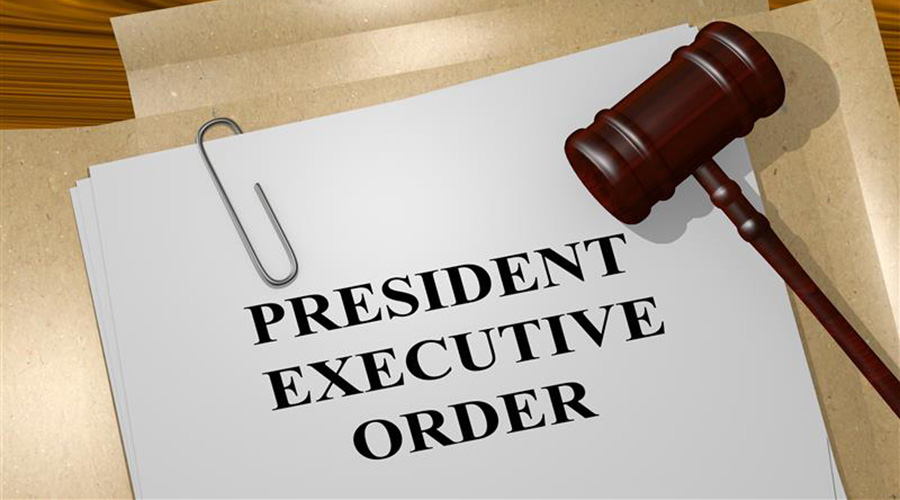
Trump Signs 5 Executive Orders Dropping Sustainable Efforts
On his first day in office, President Trump signed a series of executive orders that halt climate cooperation within the United States. January 27, 2025
By Mackenna Moralez, Associate Editor
Donald Trump was sworn in as the 47th President of the United States. In his inaugural speech, he promised to sign a slew of executive orders his first day in office, including reducing government DEI efforts, promoting the beautification of federal buildings and declaring a national energy emergency.
Outgoing President Joe Biden made strides in reducing the country’s greenhouse gas emissions. Earlier this month, Biden announced a new target for the country to reach a 66 percent reduction in greenhouse gas emissions by 2035 from 2005 levels, with the goal to keep the U.S. on the path to net-zero greenhouse gas emissions by no later than 2050.
The target aligns with goals listed under the Paris Agreement. However, it is unclear where this sits as President Trump withdrew from the Paris Agreement. According to AP, the Trump Administration feels that the Paris accord does not reflect U.S. values and “steers American taxpayer dollars to countries that do not require, or merit, financial assistance in the interests of the American people.”
In addition to the Paris accord, Trump declared an energy emergency and directed the heads of federal agencies to “identify and exercise any lawful emergency authorities available to them” in order to facilitate the leasing, siting, production and generation of domestic energy sources, according to CNBC.
During his term, Trump intends to ramp up fossil fuel production. He signed orders to revoke the Biden Administration’s actions that barred oil and gas drilling in large portions of the Arctic Ocean and in U.S. coastal waters. He executed part of his plan to maximize oil production by signing orders aimed at promoting oil and gas development in Alaska. Just last month the White House released an analysis showing further expansion of exports would increase prices for domestic consumers while also drastically impacting climate efforts, The Guardian reports.
The current administration hopes that the energy emergency declaration will unlock a “variety of different authorities” that will help produce more natural resources, create jobs and boost national security.
“America will be a manufacturing nation once again, and we have something that no other manufacturing nation will ever have: the largest amount of oil and gas of any country on Earth,” Trump said during in inauguration speech. “And we will use it.”
In another executive order, Trump ordered a stop to new leases and permits for wind projects. However, the Interior Secretary is allowed to review existing wind permits.
Wind is the largest renewable energy industry in the United States. According to E&E, wind accounts for 11 percent of U.S. electricity generation. Nearly all of it stems from onshore projects. President Trump has long been critical of the energy source, promising to end projects throughout his presidential campaign.
Prior to his departure, Biden approved permits for 11 offshore wind projects. Three of those are currently under construction, with two having just begun onshore work. One project is complete.
It is likely that Trump will face legal obstacles in trying to overturn existing permits for offshore projects.
The final stance Trump took against sustainable operations was dropping the previous Administration’s target for electric vehicle adoption, despite having Tesla CEO Elon Musk as an advisor.
The executive order would eliminate the electric vehicle (EV) mandate, promoting “true consumer choice,” AP reports. The previous administration never mandated the forced purchase of electric vehicles, rather encouraging drivers to buy EVs and for car companies to shift from gas-powered vehicles to electric cars.
Trump also promised his administration would terminate state emissions waivers that function to limit sales of gasoline-powered automobiles. Additional language in the order indicates he is likely to repeal the $7,500 tax credit for new EV purchases that was previously approved by Congress in 2022.
Mackenna Moralez is the associate editor of the facilities market.
Next
Read next on FacilitiesNet












